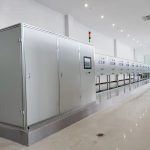The RXDC-3C Live Winding Temperature Rise Tester is a sophisticated, specialized instrument designed for accurately measuring the temperature rise of windings in electrical equipment, such as transformers, motors, and inductors, while the equipment is energized and under operational load. This is a critical test for verifying product safety, performance, and compliance with international standards.
Its core functions can be broken down as follows:
1. Primary Function: DC Resistance Measurement under Load
- The fundamental principle is that the electrical resistance of a winding (e.g., copper or aluminum) increases predictably with temperature. The tester uses a high-precision, dual-channel DC resistance measurement system.
- It first measures the cold resistance (R_cold) of the winding at a known, ambient temperature before the test.
- It then measures the hot resistance (R_hot) while the equipment is still powered on and running by injecting a precise DC test current and measuring the voltage drop across the winding. Special circuits filter out the interfering AC voltage from the main power supply.
- Using the well-known formula for calculating temperature rise based on resistance change, it automatically computes the final winding temperature rise:
ΔT = (R_hot / R_cold * (T0 + k)) - (T0 + k)
(Where T0 is the ambient temperature at the time of the cold reading, and k is a constant (234.5 for copper, 225 for aluminum)).
2. Live (On-Load) Testing Capability
- This is the defining feature. The instrument can safely and accurately measure winding resistance without requiring a shutdown of the device under test (DUT). This eliminates the cooling period normally required after a test, dramatically reducing testing time from hours to minutes and providing more accurate results, as the winding does not cool down before measurement.
3. Dual-Channel Input for Simultaneous Measurement
- The tester is typically equipped with at least two independent measurement channels. This allows for the simultaneous measurement of resistance on two different windings (e.g., primary and secondary of a transformer) or on multiple phases of a three-phase motor, ensuring consistency and efficiency.
4. Automatic Calculation and Data Management
- The instrument automatically performs all necessary calculations, including resistance values, temperature rise (ΔT), and the final hot spot temperature.
- It often features a large internal memory to store hundreds of test results for later download and analysis.
- Data can typically be transferred to a PC via USB or RS-232 interfaces for detailed reporting, trend analysis, and quality control documentation.
5. User Safety and Operational Features
- Built with high-voltage isolation and protection circuits to ensure operator safety when connecting to live, energized equipment.
- Features a user-friendly interface, often with a large LCD screen, for clear guidance and result display.
- Many models include programmable test sequences for automated and repeatable testing procedures.
Key Applications:
- Quality Control & Production Testing: Final verification of transformers, motors, and solenoids on the production line.
- Research & Development: Validating thermal design and performance of new prototypes.
- Compliance Testing: Ensuring products meet the temperature rise limits stipulated by standards such as IEC, IEEE, UL, and GB.
In summary, the primary function of the RXDC-3C is to provide a fast, accurate, and safe method for determining the operating temperature rise of electromagnetic windings directly under load conditions, which is a paramount indicator of their efficiency, lifespan, and safety.
-1024x1024.png)




